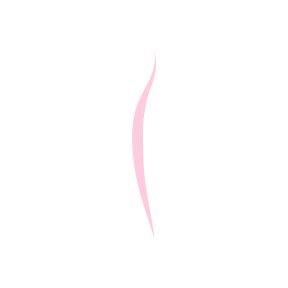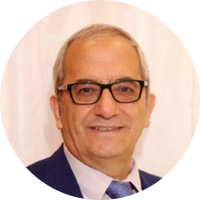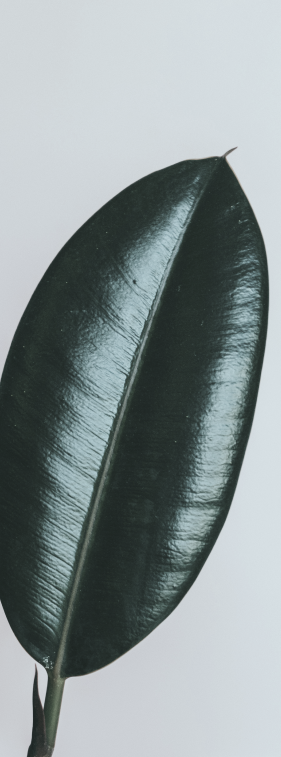
Introduction of fat grafting: Macro- Micro- and Nano fat
Select treatment to view more details:
- Nanogrease to improve hair growth
- Facial fat grafting
- Eye Region (Periorbital)
- Chin Enlargement with fat
- Breast Enlargement with your own fat
- Breast Lift with fat grafting
- Hybrid Breast Enlargement
- Breast Implant Conversion
- Gluteal augmentation with fat grafting - BBL (Brazilian Butt Lift)
- Labia Enlargement with fat grafting
- Introitus Reduction with fat transplantation or plastic
- Vaginal Plastic
- Foot Fat Pad Syndrome
- Enlargement of the legs with fat transplantation
- Scar Treatment with fat transplantation
Oslo Plastic Surgery has extensive and internationally recognized experience in fat transplantation – from head to toe. There is an accumulation of thousands of procedures carried out at the clinic with various indications such as treatment of the scalp, eyelids/face, chest/buttocks, legs and feet, as well as skin in general. These have been carefully studied and resulted in many publications over the years and are now collected in a recently published 2-volume book with 242 co-authors from all over the world, under the editor-in-chief «editor in chief» our senior physician at the clinic, MD Amin Kalaji. We are therefore very proud of our result and grateful to our patients and staff at the clinic who have contributed to this masterpiece.
See here:

Fat transplantation is an intervention where fat is harvested from one place on the body, processed (processed) and transplanted (injected) into another place where it lacks volume and/or elasticity. The fat is harvested via special cannulas, treated gently with the Colemans technique and decantation, i.e. let the fat sink and separate the fat cells from blood, oil and fluid from the local anesthetic.
Sometimes we use vibration technology to remove fat with the machine PAL-650 from MicroAire®. This takes place under sedative medication (sedation) and local anesthetic, with anesthesia and surgery nurses.
It is assumed that there are areas on the body with excess fat and a desire to harvest from, which can be used. Typical good areas are stomach, inside or outside thigh, inside knee, back and hips.
The amount and type of fat that is moved depends on both the desired volume in the area you want to correct, and how much you must remove. Mostly it is about relatively moderate amounts of fat, if too much fat is moved the fat cells die as they must have good blood circulation and tissue to survive.
Usually the fat integrates (incorporates, grows) well in the receiving area, but you must expect that the body absorbs approx. 30% of the amount of fat in the first months (somewhat less in the head region as it has good circulation in the receiving areas), therefore you fill a little more than you need to compensate for this. In addition, you will be somewhat swollen in the first weeks, which gives the impression of more volume. Smaller irregularities may therefore occur after surgery, but this can be corrected within the warranty period.
During the consultation, your wishes and needs are thoroughly assessed regarding the whole and the possibility of harvesting fat. If there is an indication for other interventions, this is assessed as to whether it should be done at the same time or in a separate case.
With a standard fat injection, small insertion holes of approx. 1-2 mm to inject the fat. We close the wound with stitches that dissolve by themselves, except for transplants to the face where we do not sew, and only close with tape. It is important not to expose these puncture wounds to the sun for a minimum of 12 months after surgery to avoid scarring and pigment changes. Cover with either tape and or high factor (Sun Block min SP30).
There are 3 main types of fat transplantation based on the size of the fat particles that are harvested, the area that is moved to and, in addition, the indication for the intervention in the recipient sites:
• Macro fat Grafting: 2.5 mm parcel size or fat particles size 2.5 mm or larger needle, (not used on the face). Used for large volume fat transplantation such as breast augmentation with fat, hybrid treatment with fat and implant, and Conversion to exchange implant with fat, buttock augmentation with fat / BBL or fat to legs. The fat is harvested with large needles of 2.5-4 mm.
• Millifat Parcel Size: or fat particle size of 1.2-2.4 mm (1.2-2.5 mm needle)
• Micro fat Grafting: less than 1.2 mm (0.5-1.2 mm needle), fat particle volume is less than 1.2. Used for smaller volumes of fat transplantation such as for the face, small defects in the body, vaginal canal and outer labia, as well as for scar treatment.
• Nanofat Grafting: less than 800 Micron (needle of 27 or 30 G). Nanofat transplantation takes the treatment one step further. The stem cells and growth factors are then separated from the fat, with cells that can divide into new stem cells, or in this case new skin cells. Nano fat is a relatively new type of treatment with regeneration as the objective and not to fill volume.
The fat cells have a particle size of 800 microns and the fat is harvested with small needles of less than 1 mm and smaller. The fat is then processed by being passed between two syringes for an emulsification of the fat, i.e. to separate the bag with fiber cells etc that you don’t want from the stem cell liquid. When treating Nanofat, you improve the quality of the skin, it can help to smooth out fine lines and small wrinkles, fine lines around the mouth and so-called crow’s feet next to the eyes, as well as the tear trough. Although nanofat transplantation does not build up volume in the face, it has regenerative properties and provides a beneficial effect on the quality and appearance of the skin and adds stem cells that are in the Nanofat after it has been separated from the tissue and liquid fat.
Regenerative effect on the skin, i.e. on the renewal process in the skin – provides better elasticity, less pigmentation, thicker leather skin and fewer wrinkles. This gives a younger appearance and better resistant skin. The most common areas for Nanofat transplantation and fat transplantation are the face and can be combined with other facial procedures, such as facelift, eyelid surgery, forehead lift and eyebrow lift, lips. Can also be used for scar treatment, in the scalp for hair loss, dark circles under the eyes and the walls of the vaginal canal.
• Other types of fat transplantation are Microneedling and Nano creams, the latter being a relatively new product.


For fat transplantation, you should not use pressure on the fat transplantation area with the use of compression noise for the donor present in the time after the operation where you liposuction when harvesting large amounts, if there are small amounts under 30 ml then you do not need it in principle. How long depends on the extent and you will be given this at the clinic on the day of the operation.
Pick-up and accommodation
If you live some distance from the clinic, we recommend that you spend one night in or near Oslo Plastic Surgery Clinic so that our caring staff are on hand to reassure you should any issue arise, that will cause you concern.
You must agree in advance with a person to pick you up at the clinic approx. 1 hour after the end of the operation, as you cannot drive, take public transport or taxi alone. You should also have someone with you the same day and the first night.
If you live far from the clinic, we recommend that you spend the night in Oslo, either with family / friends or at a hotel.
Hotels near Oslo Plastic Surgery:
-Frogner House Apartments, Bygdøy Allé 53. Website: https://frognerhouse.no (We have an agreement with Frogner House Apartments).
-Hotel Gabel’s Hus in Gabel gate 16. Website; www.nordicchoicehotels.no
Pre-Operation preparations
To get optimal results and avoid complications: Avoid stress, stay out of the sun, eat healthily, keep your weight within a normal BMI range, exercise regularly, and refrain from alcohol for 2 days prior to surgery and 2 weeks after surgery. Please refrain from smoking/snoozing for at least 2 weeks before surgery and a minimum of 2 weeks after surgery as smoking can interfere with the result.
Before surgery
You must ensure your personal health on the day of surgery. Please contact us as soon as possible if you are in doubt, as we may have to postpone your surgery therefore saving you a journey to our clinic.
Prior to surgery you will have received a prescription for antibiotics, pain killers and Hibiscrub 40 mg/ml which are all available from your local pharmacy. The day before surgery you must shower using the Hibiscrub and again on the day of the procedure immediately
before surgery. Use a clean towel for drying and put on clean clothes when you leave home and change the sheets on your bed.
YOU MUST NOT EAT ANYTHING 6 HOURS BEFORE SURGERY, but you may drink water and light juice (not milk) and chew gum up to 4 hours prior to your surgery. You may take necessary medication/s with a sip of water on the morning of the operation.
Please decide for an adult friend to pick you up after surgery, as you will not be able to drive or take a cab alone. We also advise you to have a responsible adult person staying with you during the first 24 hours.
Taking medications prior to surgery:
It is very important that you stop using the following medications 2 weeks before surgery: Acetylsalisyre, Albyl, Albyl-E and other medications that cause extended bleeding as Ibux, Alka-Seltzer, Antineuralgica, Asacol, Artrizin Alka, Brufen, Butazolidin Alka, Codacetyl, Confortid, Dispril, Dispril med kodein, Doloxene Forte, Denobid, Felden, Fenylbutazon, Gamaquil Comp, Globentyl, Globoid, Indocin, Kodein-Magnyl, Kodifen, Licyl, Magnyl, Magnyl-Koffein, Mundisal, Napren, Naprosyn, Novid, Novid with koffein, Paraflex Comp., Tanderil, Vitamin E, and Selen, Tricycliske antidepressiva.
We also recommend you omit
Garlic, evening primrose oil, Gingko Bilabo, Aspirin and any drug containing blood thinners.
The above products are known blood thinners therefore not beneficial when you are having surgery.
For Marivan we have individual arrangement. Please request this information on your consultation.
Day of Surgery
After a final discussion with your surgeon the planning process will begin. You will be photographed, and markings will be made on your surgical areas. At this stage you will have time and the opportunity to ask any questions that you may have forgotten so that your surgeon can reassure you that he fully understands your goals and expectations.
You will be introduced to your anesthetist (who will be happy to discuss any fears or issues you have regarding your anesthetization). You will also meet your theatre nurse.
The sedation which you are given in your arm is a quick and painless procedure and you will fall asleep very quickly.
You should be ready to go home within 1 hour following surgery and remember to arrange for someone to pick you up. You should have adult company with you for the next 24 hours to assist you with general tasks, so that you can relax and take it relatively easy.
We will provide you with the cell phone numbers to call us should you feel the need, but this is very rare. We just need to reassure you that we are there for you 24 hours a day.
After Surgery
We will require you to come to the clinic for a follow up check. WITH ALL SURGERY THIS IS IMPORTANT AS YOUR SURGEON NEEDS TO SEE HOW YOU ARE SETTLING.
We do not recommend you fly for 48 hours post-surgery. You may feel nauseous and tired in the hours following surgery. It is important to take your painkillers and drink enough fluids.
You may experience dizziness if you get up quickly from a chair or perhaps when you are lying in bed, so be sensible, take it easy and move slowly. This is quite normal following surgery and should pass within a couple of days.
Follow ups will be carried out at the clinic/alternatively through phone or video consultation:
1 day after surgery, after 1-2 weeks, after 3-6 months and finally after 1 year when our guarantee to you is completed.
Bleeding and infection are unusual and if they do occur, they may need to be treated with a small operation and/or an antibiotic. Asymmetry, incorrectly placed implants, or the formation of hard capsules” capsular contracture” can also occur. If corrections are needed, they will be scheduled free of charge within one year after your surgery. Anesthesia allergy is extremely rare.
If correction is necessary due to complications or unsatisfactory results, this is done free of charge within one year if there is a medical indication and a clear potential for improvement. This is our warranty period.
Heavy physical exercise and strenuous body movement or lifting must not be undertaken for a minimum of 4 weeks following the surgery.
We recommend protein-rich foods post-op and for 8 weeks after a fat transplant. Eggs, dairy products (milk, yogurt, cheese), meat, bird and fish, grain products, legumes (lentils, beans, peas) and nuts are high in protein. It is also important not to lose weight after a fat transplant to maintain volume and shape after the procedure.
The results will emerge between 3 to 6 months following surgery.
Select treatment to view more details:
- Nanogrease to improve hair growth
- Facial fat grafting
- Eye Region (Periorbital)
- Chin Enlargement with fat
- Breast Enlargement with your own fat
- Breast Lift with fat grafting
- Hybrid Breast Enlargement
- Breast Implant Conversion
- Gluteal augmentation with fat grafting - BBL (Brazilian Butt Lift)
- Labia Enlargement with fat grafting
- Introitus Reduction with fat transplantation or plastic
- Vaginal Plastic
- Foot Fat Pad Syndrome
- Enlargement of the legs with fat transplantation
- Scar Treatment with fat transplantation
Contact form
If you want to know more or have questions, use the form and we will reply to you within a short time.

Dr. Amin Kalaaji
The responsible physician is Dr. Amin Kalaaji, senior physician MD, specialist in plastic surgery and head of clinic at Oslo Plastic Surgery, and head of the Norwegian Association for Aesthetic Plastic Surgery (NFEP) 2018-2020.
Dr. Kalaaji holds many positions and gives lectures and training around the world. This benefits all our patients as he is always up to date on the latest and most advanced treatments and surgical techniques.
Patient safety, high quality and individual treatment always weigh the most at Oslo Plastic Surgery.
FAQ
Oslo Plastikkirurgi answers here frequently asked questions, and we hope that this will give you good information. We want to be helpful in the process before an operation. If you have more questions, just write or call us.
Those who want a permanent and natural ‘filler’ in the face and body such as on the neck area and scalp, as well as skin rejuvenating skin treatment that is permanent, as well as for breast augmentation, intimate surgery, and buttocks / BBL.
Normally, you can exercise carefully after 4 weeks.
You can work normally after 1-2 days if you do not have hard physical work. Consult your doctor about this at the consultation just in case.
All patients must have a consultation before the operation. The consultation is conducted by our experienced plastic surgeon who will confer with you and your medical condition and motivation for surgery. An examination is then performed, and the surgeon assesses a possible operation.
If you are suitable for the procedure, you will receive information about the procedure, precautions for the time before and after the procedure, and you will receive answers to your questions.
-In a consultation you get a prescription for antibiotics, possibly painkillers and Hibiscrub solution 40 mg / ml which you can buy at the pharmacy.
You must be healthy on the day of surgery. If you are in doubt about whether you have a cold or the like, you must contact us. The operation is not performed when you have the flu and / or fever or cough or other infection in the body. Our staff will receive you and together complete you for the operation, the surgeon looks at you before the procedure and draws up the planned procedure, as well as answers your questions. Anesthesia staff also come to greet you and answer your questions. After the operation, you will be served food and plenty of drinks in the form of bread, yoghurt, and juice (tell us if you want another diet / have allergies).
In Norway, it is not allowed to show before and after pictures from cosmetic procedures during marketing or on the clinic’s website. However, we can show great pictures from previous patients when you come for a consultation with the surgeon. This can be very helpful when choosing the shape and size of the implant, and it can make it easier for you to imagine a result. We do not send photos.
We have a 1-year warranty. If correction is necessary due to complications or unsatisfactory results, this is done free of charge within one year if there is a medical indication and a clear potential for improvement. This is our one-year warranty agreement.

